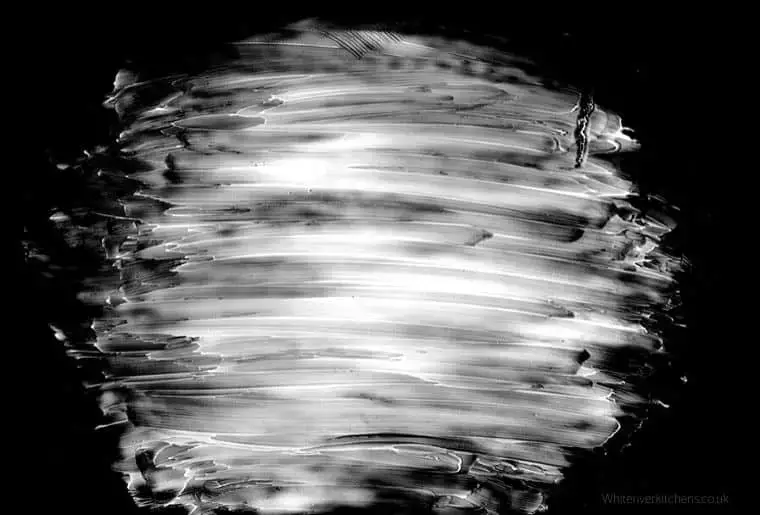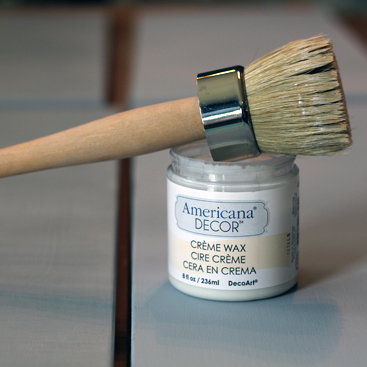When I apply a polyurethane top coat to a project, I always get brush streaks even when I use a foam brush and when I thin the material. It helps when I rag the wet finish but I’m just wiping off material I just put on. The only solution I have found is to wet sand after dry. What am I doing wrong?—Jim Seroskie
Natural bristle brushes are best for oil-based paint. Oil-based paint is a popular choice when painting wood surfaces. When using oil-based paint, it is challenging to achieve a smooth surface with no brush marks. However, as long as you practice patience. Select the right tools and materials. Before you start painting, it is important that.

Richard Oedel replies: You aren’t doing anything wrong. You just need to go to your local store and buy a can of “Patience”—just kidding. When you wipe off the finish, you are actually not wiping off the finish, but rather leaving a very thin film behind. So you need many layers of finish to build up before you see the results. I rag on thinned urethanes. But instead of one or two or three coats, I generally need 8, 9 or 10 coats to achieve the same build. If you thin oil-based quick-dry urethane with naptha, it will dry fast enough so that you can get two coats on in a day. Don’t push it. Have Patience. Five days to a really nice finish is worth the effort.
Bruce Wedlock replies: Brush streaks come from the finish not smoothing out after the application. Viscous finishes like typical oil varnishes don’t flow easily, so brush marks can result. One solution is to thin the finish so it flows evenly before it tacks up. Finishes like Minwax Wipe-On Poly are just thinned varnish that will flow easily. Another excellent wipe-on poly is General Finishes Arm-R-Seal.
Application with a pad made from an old, lint-free T-shirt works well. You need to apply a layer that has a wet surface appearance, but not so much that it runs. This takes a bit of practice to get it right. But you don’t want to wipe the layer off. The pad is just replacing the brush as the applicator. The first coat seals the wood and needs to be sanded lightly with 150 grit. The second coat might need light sanding with 180 before the third coat. You will need at least three coats, but it dries fast.
I’ve also applied wipe-on poly with a quality brush with good success. You need to keep moving along the wet edge—don’t re-brush if at all possible. I try to finish my work before final assembly if possible to be finishing horizontal surfaces.
Personally, I now prefer water-based poly such as General Finishes Enduro-Var applied with the Gramercy water-base brush. It dries fast so you can apply three coats in a day. Water-base finishes must be applied with synthetic bristles. Natural bristles will absorb the water and swell up. And don’t drag the brush on the edge of the can. It dries so quickly you will quickly get flakes falling down in the liquid. Just dip the brush in and let it drain. You can also pad it on.
Finally, for a fine finish you will need to wet sand with 600 grit and water with a drop of dishwasher detergent. Allow at least a week for the finish to cure. If you get gummy sandpaper, you have not let the finish cure long enough. Cured wet-sanded finishes produce a white powder residue and don’t clog up the sandpaper.
I only use gloss finishes. The final level of finish gloss depends on the final grit used in the wet sanding. Six hundred grit yields a nice satin look. Micro-Mesh sanding pads with grits from 1500 to 12,000 will take you to a wet look finish. You don’t need several different types of finish for satin or semi-gloss.

Bob Oswald replies: Actually my best finishes are done via your observed failure “wiping off material I just put on.” We call it the wipe off finish technique, which in fact wipes off most, but not all, of the material just applied. To avoid being wasteful of that wiped off varnish, use this technique.
- Wipe on a very heavy first coat on the bare wood. Let it sit a few minutes and watch for dry spots forming where it soaks in. Apply more varnish on those areas. I generally also sweep the entire area also. It’s fun to see it glisten and it won’t hurt. When it stops soaking in, but not more than about 15 minutes, wipe off as much as you can. You will waste a bit here but will make it up in future steps. Well wiped down, you will find nearly no dust sticking. We use this technique in the high school wood shops where we don’t have a clean room.
- Usually 6-12 hours later, start the process of applying the next five coats. Note: It’s not usually necessary to ‘sand’ on this step. Wipe on a thin coat over the whole project. Allow it to get slightly tacky, usually not more than 10 minutes. Wipe it off. You only put on a very thin coat so you’re not wiping off much.
- 8-12 hours later, feel the surface. You should only find an occasional dust bump. Sand it lightly with 320 grit paper. You are not trying to remove varnish, only knock off the dust bumps. I find that a light pressure with a form pad sander, two to three passes is plenty. Feel a before and after section and you should be amazed.
- Repeat step 3 three to four more times. Up to 4-5 coats it will not seem like you’re making progress. At about coat 5, it starts to take on that satin sheen your are looking for. Then perhaps one more coat after this.
I and many of the Oregon woodworkers have used this technique for years with stunning finishes that do not look painted on—the appearance you get by brushing varnish. I’ve been happy with everything from pure poly at Home Depot (ok), Rockler’s General Finishes with some linseed oil, (wonderful) or Daly’s Profin, similar oil base (fantastic). Mostly it just takes patience. Realize that it’s only three days start to finish. Two coats a day, morning and evening, for six coats.
Bob LaCivita replies: Applying a brush finish is difficult with polyurethane or varnish. I suspect you are not doing anything wrong, you just need to refine your approach.

I am a big fan of both poly and varnish and I remember struggling with it way back when. Urethane and varnish hold up where oil finishes and shellacs fail. Here is my approach that I taught myself.
Buy a urethane with a high solid content. Parks is my go-to finish. Fabulon is a very good finish also. Besides having a great name right out of the 1950s, this is tough stuff and is used on floors. It is softer and more elastic then Parks. It is not as soft as Spar varnish.
Make sure your project is sanded well up to 220 grit or a little higher. I cut my poly with high quality mineral spirits, 2/3 poly and 1/3 mineral spirits for the first two coats.
The first coat I use to seal the pores and raise the grain. Use a high quality soft brush made for oil base finishes. And apply with even strokes slightly overlapping the previous. Your strokes should be similar to an airplane taking off and landing. Think Cessna and not Navy jet. Let dry 24 hrs. Drying time is very important. When you think it is dry, place your hand on it and if it is cool to the touch it needs more time.
When dry, scuff sand with 220 grit. If it is a large surface I sand it with a power sander that has a small orbit. If while sanding gummy balls are rolling up, the finish is not dry. The sanding should create fine white powder dust. Wear a mask or respirator. Do not worry about sanding through the finish. Clean the surfaces with a damp rag and blow out the corners and crevasses with an air gun. If you do not have an air gun use a rag and soft brush.
The second coat is a repeat of the first. When dry you will notice that the surface is much smoother than the first coat because you raised the grain and cut it off. At this point I look for areas that have absorbed the finish more then others. This is more likely to happen in woods with short, crotch or quilted grains and soft woods. Some areas will be shiny and some will be dull. I re-coat the dull areas, let dry and scuff sand to 220 grit.
Paint Without Streaks
The third coat is the tricky one. I cut the poly by feel. I rub it between my fingers and feel the viscosity. That is the art in the word artisan. This is no help. My guess is five parts poly to one part mineral spirits. I use a badger tail brush 2˝ available at Dick Blick (dickblick.com). I charge the brush with a small amount of finish. Dipping it in 3/8˝ to 1/2˝ . I slowly apply the finish and finish each pass with the airplane technique. Let dry 24 hours and scuff sand with 320 grit wet dry paper. I prefer to dry sand however, if I have stubborn brush marks, I wet sand using mineral spirits as the lubricant. I then lightly rub with 0000 steel wool. Do all the scuff work with a firm gentle hand. The goal is to remove the brush marks. If you cut through the finish, repeat third coat process.
The final coat is simple. Using the third coat mixture, dip a cotton rag in the poly and rub a coat on the project. Do one surface at a time. Rub the excess off quickly with a dry rag. As you finish adjacent surfaces make sure you rub any poly off already finished surfaces. Stand back and admire.
Clean your brushes well after each coat. Do not leave rags with oil base finishes in your shop. They can spontaneously combust. I soak them in water and lay them flat out side.
Bruce Hamilton replies: A good quality natural hair brush is necessary. If you are using a varnish that has a flattening agent in it that is meant to give a semi-gloss or satin sheen, make sure you stir the vanish well to evenly distribute the flattening agents. After stirring the varnish I always transfer a small amount to another smaller container to prevent any dust ot dirt from getting back in the original container. Remember to occasionally stir this smaller container as well.
Streaks When Painting

Another point is the temperature of the air where you are varnishing. High temperature may cause the varnish to begin to set up before you have a chance to tip it off.
Paint Brush Leaving Streaks
Tipping off is done by wiping the excess varnish on your brush on the side of the small container then lightly drawing the brush, held perpendicular to the surface, and then removing the excess back into the can or to areas not yet varnished.
Thinning the varnish is also important. Start by adding 1/8 part ordorless mineral spirits into the can you are brushing from. Add more mineral spirts if necessary testing the results on a scrap before using it on your project.
